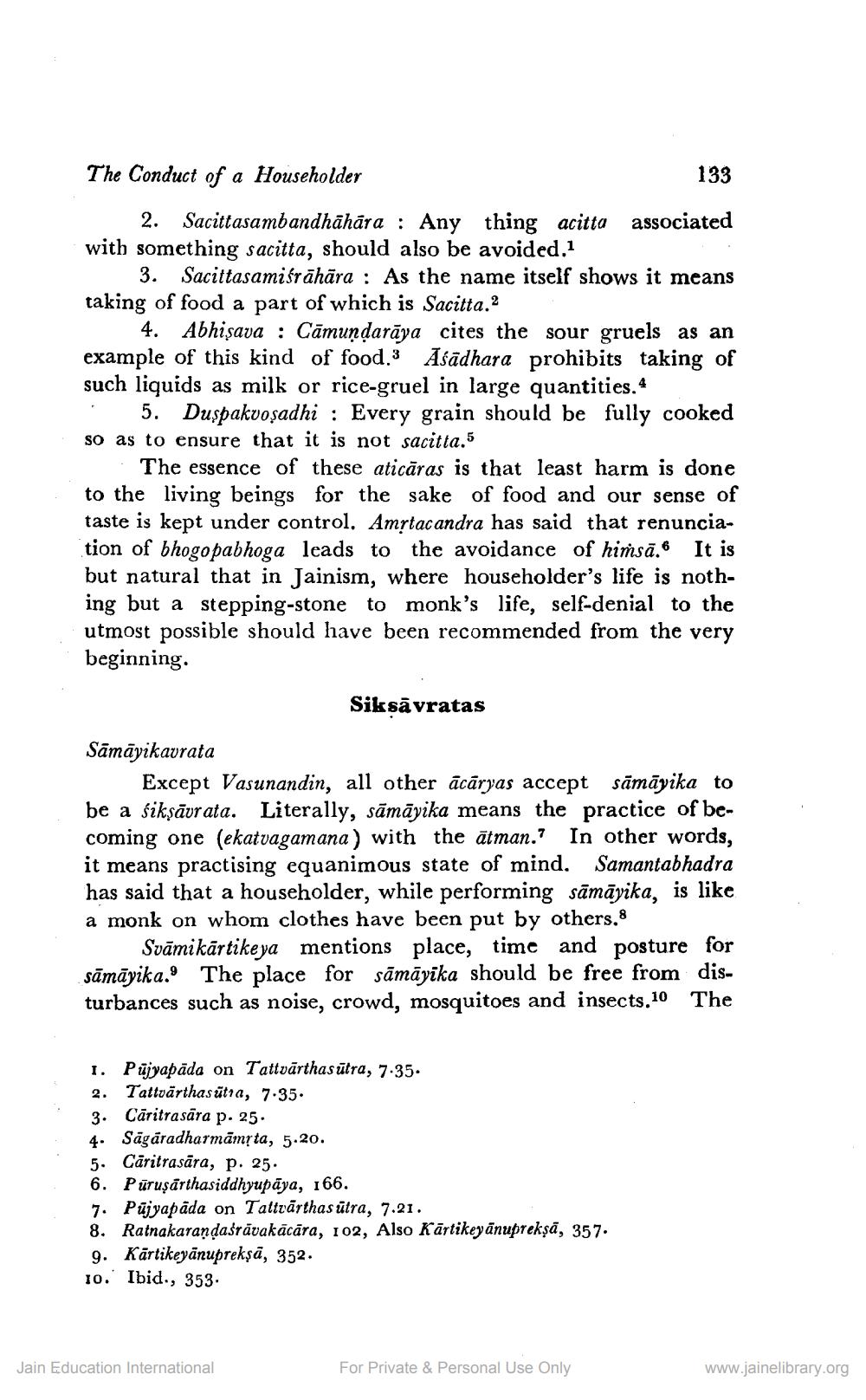________________
The Conduct of a Householder
133 2. Sacittasambandhāhāra : Any thing acitta associated with something sacitta, should also be avoided.1
3. Sacittasamifrāhāra : As the name itself shows it means taking of food a part of which is Sacitta.2
4. Abhişava : Cāmundarāya cites the sour gruels as an example of this kind of food.3 Āsādhara prohibits taking of such liquids as milk or rice-gruel in large quantities. 4
5. Duspakvoşadhi : Every grain should be fully cooked so as to ensure that it is not sacitta.5
The essence of these aticāras is that least harm is done to the living beings for the sake of food and our sense of taste is kept under control. Amrtacandra has said that renunciation of bhogopabhoga leads to the avoidance of hiṁsā.6 It is but natural that in Jainism, where householder's life is nothing but a stepping-stone to monk's life, self-denial to the utmost possible should have been recommended from the very beginning.
Siksāvratas
Sāmāyikavrata
Except Vasunandin, all other ācāryas accept sāmāyika to be a śikṣāvrata. Literally, sāmāyika means the practice of becoming one (ekatvagamana) with the ätman.? In other words, it means practising equanimous state of mind. Samantabhadra has said that a householder, while performing sāmāyika, is like a monk on whom clothes have been put by others. 8
Svāmi kārtikeya mentions place, time and posture for sāmāyika.' The place for sāmāyika should be free from disturbances such as noise, crowd, mosquitoes and insects.10 The
1. Pūjyapāda on Tattvārthasūtra, 7-35. 2. Tattvārthasūtra, 7.35. 3. Cāritrasāra p. 25. 4. Sāgāradharmāmsta, 5.20. 5. Caritrasāra, p. 25. 6. Pūruşārthasiddhyupāya, 166. 7. Pujyapäda on Tattvārthasūtra, 7.21. 8. Ratnakarandastāvakācāra, 102, Also Kārtikeyānuprekṣā, 357. 9. Kārtikeyānuprekṣā, 352, 10. Ibid., 353
Jain Education International
For Private & Personal Use Only
www.jainelibrary.org




